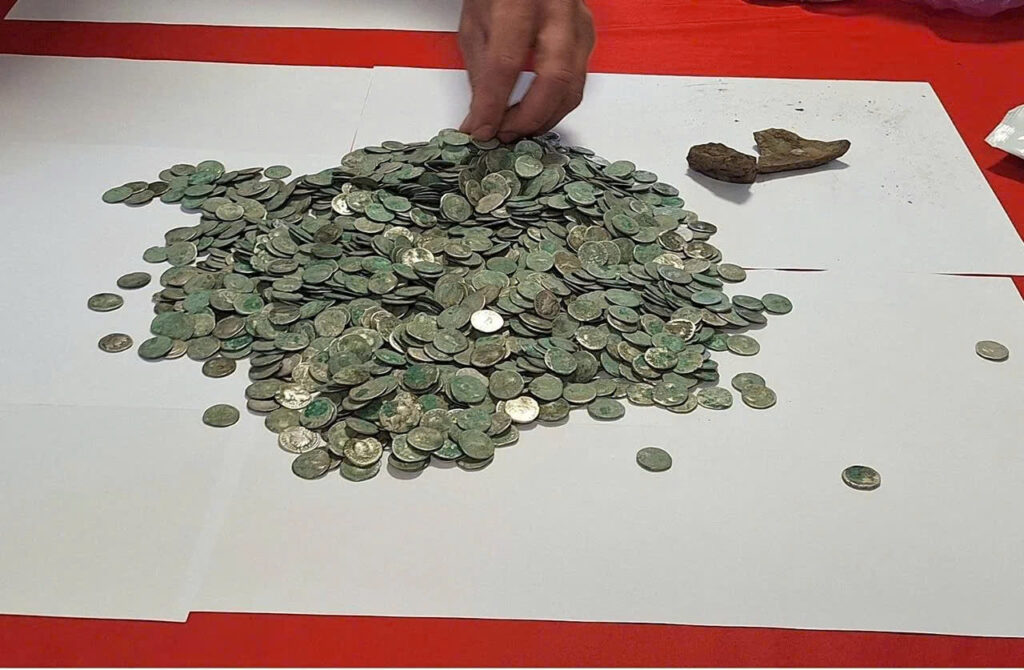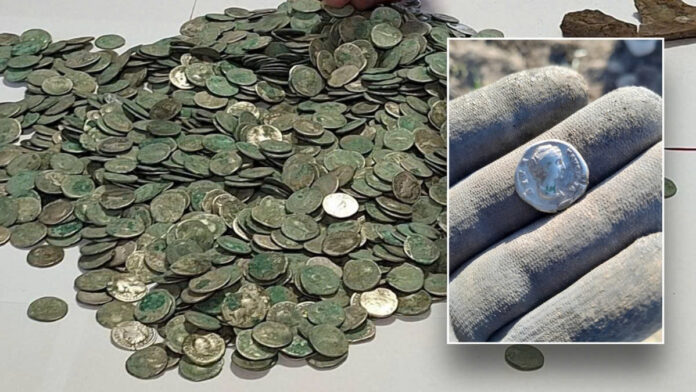A weekend hobby turned into a historical discovery when Romanian treasure hunter Marius Mangeac made an extraordinary find near the village of Letca Veche, approximately 25 miles southwest of Bucharest. What started as a typical Saturday outing with his metal detector resulted in one of Romania’s most significant archaeological discoveries.
The Accidental Discovery
Mangeac, who enjoys metal detecting as a form of relaxation and physical activity, was exploring the countryside alone when his detector signaled something unusual beneath the earth. “It was a gorgeous Saturday morning when I decided to take my detector out for a solo adventure, something I do regularly,” he shared on social media. “I never imagined this particular day would hold such an incredible surprise.”

What emerged from the soil was nothing short of remarkable: a collection of 1,469 ancient Roman silver denarii, coins that experts believe to be approximately 2,000 years old. The treasure spans over a century of Roman history, featuring currency minted during the reigns of 11 different rulers, from Emperor Nero’s era beginning in 54 CE through the time of Marcus Aurelius ending in 161 CE.
Archaeological Significance
The Burial Context
Archaeological evidence at the discovery site indicates that these precious coins were originally contained within a ceramic pot that had been deliberately broken before burial. This practice of intentionally destroying vessels before interment was not uncommon in ancient times and often held ritual or symbolic significance. Fragments of the ceramic container were found scattered among the silver coins, confirming this deliberate act.
Historical Importance

The hoard represents one of the most substantial Roman coin collections ever unearthed in Romania, providing valuable insights into the economic and political landscape of the ancient world. The coins bear the portraits of various emperors and empresses, creating a visual timeline of Roman leadership during a crucial period in the empire’s history.
Following Proper Protocol
Demonstrating remarkable responsibility, Mangeac spent two full days carefully photographing and documenting each coin before taking any further action. He then adhered to Romanian legal requirements by reporting his discovery to the municipal authorities in Letca Nouă. Law enforcement officials promptly secured the site and documented the find, ensuring its preservation for future archaeological investigation.
Video
The Treasure’s Future
The impressive collection has been officially cataloged and will be transferred to the County Directorate for Culture for professional assessment. Following evaluation, the coins will find their permanent home at the Teohari Antonescu County Museum in Giurgiu, where they will be displayed for public viewing and education.
Reward for Responsible Discovery
Under Romanian legislation, metal detectorists who properly report valuable archaeological finds are eligible for compensation of up to 45% of the treasure’s appraised value. This legal framework encourages responsible treasure hunting while ensuring that significant historical artifacts are preserved for scientific study and public benefit.
A Discovery for the Ages

This remarkable find not only enriches Romania’s archaeological heritage but also demonstrates how amateur enthusiasts can contribute to our understanding of ancient civilizations. The careful handling and proper reporting of this discovery by Mangeac serves as an exemplary model for metal detectorists worldwide, showing how personal hobbies can lead to contributions to historical knowledge when conducted responsibly.
The treasure now awaits further study by experts who will undoubtedly uncover more details about its origins, the circumstances of its burial, and its significance within the broader context of Roman presence in the region.

